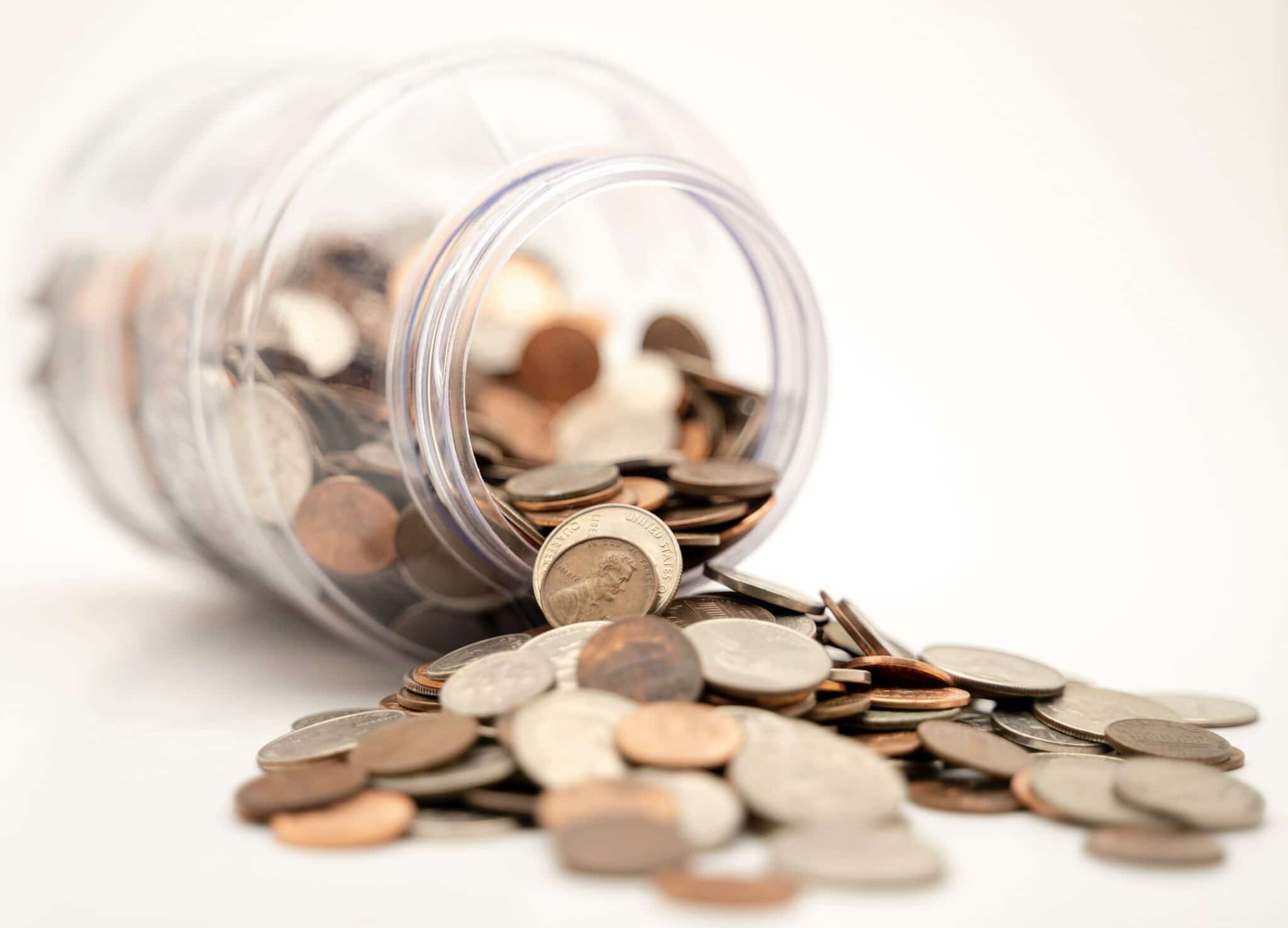FEATURED ARTICLE
Why Should You Consider Investing?

Rebekah May
September 17, 2020 •11 min read
TABLE OF CONTENTS
1. The ‘miracle’ of compound returns
2. The need to stay in the market
3. The need to beat inflation
What can I invest in?
How do I know what to invest in?
We've teamed up with Nutmeg to bring you these incredible guides to investing. Over the next two weeks, we'll look at why you should consider investing, what you can invest in as well as taking a look at the risks involved in investing.
Investing money, rather than just leaving it in the bank, gives us the possibility of building a bigger pot for the future. You can invest now for a specific goal, such as retirement, or a more general desire to have some extra money for a rainy day.
There are a number of key reasons why investing could make good sense for you.
1. The ‘miracle’ of compound returns
What are compound returns?
Compound returns are often referred to as the eighth wonder of the world. They are also an investor’s best friend.
The basic concept is simple. In the first year of investing you generate returns on your initial investment. In the second year you invest the capital plus those returns, and you generate further returns on the total. And so it goes on, helping you to build a bigger pot.
Of course, investing is always subject to the ups and downs of the stock market, so returns aren’t guaranteed every year. However, by investing over a long timeframe, you can give your investment a better chance of making up for short-term losses.
Underestimating the power of compounding
There have been many studies into compound returns and why we fail to mentally account for them properly. One such study was conducted by Craig McKenzie and Michael Liersch at the University of California.
They asked groups of undergraduate students to consider how much their money would grow if they deposited $400 per month into an investment which grew at 10% per year.
One group were given calculators and asked for a calculated answer, the other group were given no aid at all and asked for a best guess. The results? Ninety percent of respondents got it wrong.
Both groups grossly underestimated the final value of the portfolio. Why? They failed to take compounding into account. The average guesses for the portfolio size after 40 years was $500,000. The correct figure is around $2.5 million.
This ‘miracle’ of compound returns is perhaps most beneficial when looking at investing for retirement – where the earlier you start the better off you could be.
The research group CLSA came to a dramatic conclusion about saving for retirement. They found that if you deposit into a pension from the age of 21 to 30, your pension pot will be worth more than if you saved the same amount each month from the age of 30 to 70. This assumes that you stop contributing at 30, but the fund continues to provide returns at the same rate.
Why little things mean a lot
Seeing the full benefit of compound returns is all about time and patience. That means that you don’t have to stash half your income away immediately. If you commit to setting aside as much as you can every month and make regular contributions to either your investments or to a savings account, small amounts can soon add up. In the case of a cash savings account this would be through compounding on the interest earned.
Correspondingly, what seems like a small disparity in rates of return can soon start making a big difference. Interest rates on cash accounts are at historically low levels at the moment. So it pays to shop around for the best rate. It’s also important to remember, a number of cash ISA providers may have generous introductory offers, and then reduce your interest rate after the account has been open for one year. Be vigilant. Keep on top of what rate you’re getting. And it may be worth switching providers if you can get a better deal elsewhere.
2. The need to stay in the market
Investing typically takes a long time. There are no magic beans and the adage ‘if something seems too good to be true, it probably is,’ is a good motto. The longer you are invested in a market the more money you are likely to make over time, this is due to compound returns and because you will likely keep topping up your investment during your working life. However, staying invested for a long time also helps smooth out any short-term volatility. Essentially: by staying invested longer you can iron out the blips when the market goes down; therefore, the longer you invest, the less likely you are to lose money.
Most investors are exposed to the equity markets which offer you a share or stock in a publicly listed company. These shares are listed in indexes such as the FTSE 100, the S&P 500 or the NASDAQ.
Looking at historic UK stock market data from 1969 until 2016, you’d have had a 55.2% chance of making gains if you’d invested for 1 day – similar odds to the toss of a coin. But long-term investing dramatically increases your chances of making positive returns. Investing for one month ups your probability of gains to 63.9%, investing for one year boosts your chances to 82.1% and investing for 10 years or more pushes it to 99.4%.
Source: MSCI Developed Equity Markets with after-tax dividends reinvested, priced in GBP. Source: MSCI (GBP Net returns), December 1969–June 2016, Bloomberg.
Below is another chart that takes data from 1971 through to 2020, which shows that were you to invest your money in equity for 15 years, the probability of loss would drop to zero.
Past performance is not a reliable indicator of future performance.
Source: Macrobond; MSCI World Equity Mid and MSCI Large Cap Total Return in GBP, 1 January 1971-20 May 2020
It’s never been easier to visualise your potential investment returns. You can see the effect of investment returns on future spending with our pension calculator.
3. The need to beat inflation
Inflation can be described by how much prices rise or, equally, how much your money devalues. That chocolate bar you enjoyed growing up is likely more expensive now: that’s inflation. Pretty much every price and how it has changed over the years is a measure of inflation: from stamps, to bread, to houses.
If you left your money in the bank you used to be able to hope interest rates would keep up with inflation, meaning your purchasing power kept parity with prices over time. However, today’s interest rates are at record lows.
In August 2020 the Bank of England interest rate was 0.1% and the bank has even discussed the possibility of negative interest rates. By contrast, the CPI inflation rate for the 12 months to June 2020 was 2%. This means the cost of living is outstripping your spending power, as the real value of your cash savings decreases.
Investors are often willing to accept market risk in order to achieve returns that beat inflation. In the current interest rate market, leaving your money in cash is not a good idea if you want to beat inflation.
Let’s look at an example:
You’ve just discovered that a distant relative has left you some money in their will, but you might be disappointed when you realise it’s just £100. When your relative first bequeathed you that money, back in 1975, it would have been the equivalent of about a month’s wages. Nowadays, most people make more than that in a day.
Let’s look at the effect of inflation had on the value of £100 cash over time.
Source: ONS Internal Purchasing Power of the pound (based on RPI), 1975-2015
This is what inflation does — it decreases the real value of your money. So, while the actual number remains the same, it will be worth far less in years to come. In order to beat inflation, your money has to generate a return better than the prevailing inflation rate — and that’s where investing comes in.
Finally, in the case of negative interest rates, which have been seen in countries such as Denmark, Switzerland and Japan, you are having to pay to keep your money in the bank. So, in the case above, not only would your pounds be worth less due to inflation, you would actually have fewer pounds year-on-year.

What can I invest in?
One of the most difficult decisions when investing is ‘what should I invest in?’. The golden rule is: ‘don’t invest in anything you don’t understand’.
You can invest in almost anything, from coffee beans to gold, but the four fundamentals are: shares, bonds, property and cash. In this section we explain a little more about each one.
1. Shares:
Shares are quite literally a share in the ownership of a company. If you buy a share in a company, you own a portion of that company.
Depending on the class of share, that can mean you are able to vote at the annual general meeting on decisions such as the salary of the chief executive officer. It also means you get a share (or portion) of the profit of the company. This is the dividend.
Shares are a valuable part of a portfolio because, alongside the dividend income, the price of a share can rise over time as well. So, you could sell your share for more than you bought it for, therefore making a profit.
Of course, share prices rise and fall all the time. That is why owning individual shares can be very risky. A portfolio with a number of different shares diversifies your risk. It is possible to buy a ready-made portfolio that represents the whole stock market, or a section of it. These are called trackers.
The price of shares in larger companies are quoted on the stock exchange. In the UK the main stock exchange is called the FTSE, (more fully, the Financial Times Stock Exchange.) And there are two main indices – the FTSE100, which is comprised of the 100 biggest companies listed on the stock exchange, and the FTSE250, comprised of the next 250 biggest companies.
2. Bonds
Bonds are a loan to a company or a government for a set amount of interest over a set amount of time. Government bonds are usually seen as very safe investment asset because you are essentially lending the government money, and it is very unlikely the government would default on the loan. For governments, bonds are the main way they can raise funds without increasing taxes. The UK treasury issues bonds which are known as gilts (because in the past the paper bonds were gilt-edged).
You can also get a bond from a company seeking to raise money.
For example:
Tesco might issue a bond for 10 years at 4%. This means that the buyer of £10,000’s worth of this bond lends Tesco £10,000 which Tesco keeps for ten years. During the ten years, Tesco will pay the investor 4% per year, or £400, and at the end of the 10 years, the £10,000 will be returned to the investor. Totally, they will now have back £14,000 from the initial £10,000 – a return of £4,000 plus their initial investment.
The creditworthiness of the company is important as a company that is seen as more risky (with a lower credit rating) will have to offer a higher interest rate to attract lenders.
During the 10 years, the bond can be bought and sold. The price will depend on how the interest rate compares with interest rates more widely. For example, if interest rates are low, the bond will be relatively attractive and the price will be higher than the £10,000 initially paid. If the credit rating of the issuer changes, the price of the bond might also change.
As a class, bonds are usually less risky than shares. This is because interest rates do not change on a day-to-day basis, although a shift in interest rates will affect all bonds. Like shares, individual bonds are generally riskier than a portfolio of bonds, and it is possible to buy a bond fund representing a large collection of individual bonds.
Read more about bonds, what they are and how they work on the Nutmegonomics blog.
3. Property
There are two types of property for investment: residential, which is accessed by buy-to-let, and commercial, which is most often accessed by property funds. For both, the income stream is from rent, and it is hoped that the capital value of the property will increase as well.
Property is an illiquid asset. It can take months, or even years, to find a buyer for a property and then several more months to complete on the property sale.
With a residential property investment (buy-to-let), you have to consider your deposit and any equity you accumulate as locked in until you sell. Another big risk is related to interest rates. If you have a mortgage and the interest rate goes up, it might be some time before you are able to increase your rental income to cover the mortgage costs. You also need to remember the extra costs of buying and maintaining a property, such as stamp duty, solicitors’ fees and insurance.
Read more in our paper: Should you invest in property or stocks and shares? .
4. Cash
Cash is very secure in that it is not subject to investment risk and it is very liquid. You can take it out of the bank and/or transfer it into other assets (spend it) at any point.
The amount of money in your bank account will not change in response to external events (unless you get hit by negative interest rates) but its value will be affected by inflation.
The two risks of investing in cash are inflation and bank failure.
While very unusual, banks have failed in the past, most recently during the great financial crash of 2008. Your cash is usually protected by the financial services compensation scheme up to a maximum of £85,000 in each bank, although you might have to wait a short time to get hold of your money.
5. Alternative Assets
You can theoretically invest in anything – from wine to bitcoin. However, a lot of these ‘alternative assets’ exist in unregulated markets. For example, there are no rules or regulations governing how cryptocurrency is traded, or how it is valued. Likewise, the provenance of an asset such as a painting can be disputed, meaning it can be hard to value or sell.
For these reasons, those seeking alternative assets will usually see them as passion projects, rather than the mainstay of their investment portfolio. Putting money into an investment portfolio holding equities, bonds and some cash is more likely to provide returns with much lower risk than investing in alternative assets.
6. Socially responsible investing
Finally, it is worth considering other metrics in your investment. Socially responsible investing (SRI) allows you to choose shares, bonds and other assets that are only issued by companies and organisations that adhere to standards promoting good environmental, social and governance values. By choosing SRI, your investments could avoid companies that profit from war, or which have bad human rights or polluting records. Instead, you could invest in companies seeking to change the world for the better.
SRI is a valid investment option when it comes to the bottom line. We have seen evidence that SRI portfolios are providing higher returns than non-SRI portfolios and are being increasingly sought out by investors wanting their money to do good and work hard. An apt way to see SRI is ‘investing for the world you want to retire in’.
You can read more about SRI and how and why it is so timely in Nutmeg’s SRI whitepaper.
How do I know what to invest in?
Just as it is recommended to invest in a number of shares rather than just one share, it is advisable to invest in a collection of asset types rather than a single type. For example, it is riskier to invest everything in the FTSE100, rather than having some gilts and bonds as well.
So which type of assets do you pick and how much of each?
This depends on your appetite for taking on risk. A slow and steady approach will typically have more bonds and gilts, while a more growth-focused strategy will tend to have mostly shares from a range of countries but may have some other assets as well.
Once you’re ready, you can start investing with Nutmeg today. It’s simple, straightforward and we’ll be on hand to help you answer questions you might have.
Nutmeg is offering a special offer of no portfolio management fees for 6 months for Emma users. To take advantage of this offer, start by entering your email address on our partner page. You’ll then be able to see the sorts of returns associated with each type of Nutmeg investment, with a sample portfolio.
As with all investing, your capital is at risk. The value of your Nutmeg portfolio can go down as well as up and you may get back less than you invest. Past performance and forecasts are not reliable indicators of future performance. Tax treatments apply. Learn what we mean by risk
You may also like
Check out these related blog posts for more tips
© 2025 Emma Technologies Ltd. All Rights Reserved.
Emma is registered and incorporated in England and Wales.
Emma Technologies Ltd is an appointed representative of RiskSave Technologies Ltd, which is authorised and regulated by the Financial Conduct Authority (FRN 775330).
Payment services (Non MIFID or Deposit related products) for Emma Technologies Ltd are provided by The Currency Cloud Limited. Registered in England No. 06323311. Registered Office: Stewardship Building 1st Floor, 12 Steward Street London E1 6FQ. The Currency Cloud Limited is authorised by the Financial Conduct Authority under the Electronic Money Regulations 2011 for the issuing of electronic money (FRN: 900199). For more detail on how your money is protected please see here. You can also find Currency Cloud's Terms of Use here.
Emma Technologies is an Introducer Appointed Representative of Quint Group Limited and not a lender. Quint Group Limited is authorised and regulated by the Financial Conduct Authority (Firm Reference Number 669450). Monevo Limited is an Appointed Representative of TransUnion International UK Limited. TransUnion is authorised and regulated by the Financial Conduct Authority (Firm Reference Number 737740). Emma Technologies introduces customers first to Quint Group Limited, as a licensed credit broker, who then refers on to Monevo Limited.
Emma is registered with the Financial Conduct Authority under the Payment Services Regulations 2017 for the provision of payment services.
Financial Conduct Authority Reg Nr: 794952.
Company Registration Number: 10578464.
Data Protection Registration Number: ZA241546.
All testimonials, reviews, opinions or case studies presented on our website may not be indicative of all customers. Results may vary and customers agree to proceed at their own risk.
Resources: Cancel subscriptions, Cashback offers, Who charged me, Rent Reporting, Budgeting, Investment universe, Emma vs Moneyhub.
Featured cashback offers: Samsung, SimplyCook, NordVPN, Audible, M&S Homeware.









